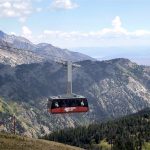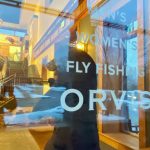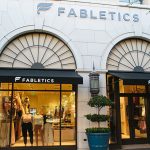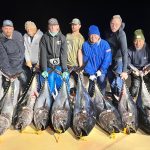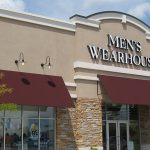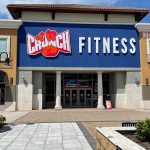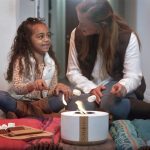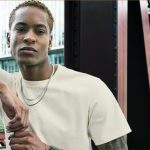For years, footwear companies were regarded by environmentalists as notorious for environmental abuses. According to a study conducted by adidas, the average pair of shoes with leather uppers produced in 2005 used nearly three kilowatt/hours of energy, 57 liters of waste water, and discarded roughly 10% of raw materials in the upper (12% for synthetic uppers). However, recent advances in technology are promising drastic reductions in many of these statistics. Many footwear manufacturers are pushing their factories to take a more eco-friendly approach to all of their business practices. Others are finding new design alternatives that reduce or eliminate the amount of glue used in the production process. Still others are making all of their environmental impacts more transparent to the public in an effort to push others in the industry to follow suit.
Leading this push is a new generation of footwear brands who have placed sustainability at the center of their business model.
Simple, which first began using water-based adhesives in its Fall 06 collection, has initiated a “Good, Better, Best” program to further improve its standards of environmental sustainability. Simples “Good” shoes use water-based adhesives and come in a 100% recyclable box without wasteful stuffing. (Flip flops will come in 100% biodegradable bags.) Some shoes also sport 100% cotton laces, canvas material, cork-blended topsoles, and jute-inlayed outsoles. “Better” shoes have all of the “Good” features, as well as natural crepe rubber, a PET pedbed made of 100% post-consumer plastic from milk jugs, and bamboo fabric linings. “Best” shoes-part of Simples Green Toe collection-have all “Good” and “Better” attributes, plus renewable and sustainable materials such as jute, linen, cotton, cork, natural crepe and latex rubbers, and felted wool. The company even has a Green Toe kids collection called Green Piggies.
At Timberland, the Outdoor Performance divisions new Greenscapes program is designed to reduce environmental impact while providing style as well as performance. In footwear, only water-based adhesives are used, all structural reinforcements in the shoe (such as heel counters) are made from 100% recycled content, and all logos are PVC-free.
Packaging is made of 100% recycled cardboard (with no chemical adhesives), printed with soy-based inks. Each box is adorned with a “nutrition label” providing an overview of the products environmental impact. Although many eco-friendly products on the market are earning kudos for sustainability, styling often remains an issue. For this reason, the Greenscapes design brief mandated, “Be green, dont look green.”
Mion is also participating in Timberlands Greenscapes program and has made some significant strides towards reducing the amount of energy used and raw material wasted. The brands average of 0.934 kilowatt/hours per pair is roughly one-third of the average in the adidas study. The brand has also managed to achieve a material efficiency of 98%.
Patagonias newest footwear line is imbued with a variety of eco-friendly materials such as extra-soft, chrome-processed leathers supplied by ISO-14001 tanneries, 70% all-natural latex outsoles, and 100% vegetable-based laces. In some instances, stitched-on outsole construction minimizes the need for solvents and adhesives. For example, the brands Toast & Jam model functions as two shoes in one thanks to a recycled TPU piece fastener that helps secure the outsole to the upper. This glueless construction allows the wearer to easily remove the shoes outsole, effectively turning the shoe into an indoor slipper.
In the footwear component realm, Vibram continues to expand its Ecostep product, a rubber compound formulated by using 30% recycled material from the outsole manufacturing process. (The scrap has long been used as an additive to asphalt to improve highway durability, and in childrens playgrounds to improve safety.) Footwear makers now using Ecostep include Timberland, Burton and Patagonia. Vibram is also expanding their product development on their five fingers footwear line. The company has sold out every season, and is hoping to be able to produce enough of the new models to meet demand this year. The company created two new models, one for watersports or running, and one for board sports. The companys core competency, outsoles, is still growing at a rapid rate.
Keen Footwear is also making eco-inroads with its Hybrid.Think sustainability initiative in which the company uses 100% biodegradable boxes made of recyclable materials, printed with soy-based inks, and constructed with water-based latex glue. As the newest piece of this program, Keen has launched a bag collection called Hybrid.Transport. The line is designed with repurposed materials such as 100% recycled aluminum hardware made from discarded aluminum shoe molds. The bags also incorporate reclaimed rubber that is trimmed from outsoles during shoe production, and is then reworked and remolded into protective cushioning features. In addition, the laptop sleeves in the computer models contain recycled polyester and are lined with recycled/reclaimed foam.
Ahnu may be the new kid on the block at OR Winter market, but their booth made the brand look like it had already developed an established following. Between the constant influx of sales reps looking to pick up the line and retailers looking for the “next big thing,” VanDine and his team hardly had a break.
Golite footwear continues to take advantage of TBLs invention factory and tweaked the fit of their line this year based on user and lab feedback. The brand is focusing primarily on the more extreme versions of endurance trail running, and creating product that can handle these conditions using softshell uppers and their proprietary aggressively lugged outsole.
Montrail had only one new product at the winter show this year, the Cirrus XCR a high-top waterproof-breathable light hiker built on the Hard Rock last. The company is planning on a big push in product development in spring 2008. Montrail also changed their proprietary thermo-moldable feature from CTX to PRFRM with a new logo and branding.


